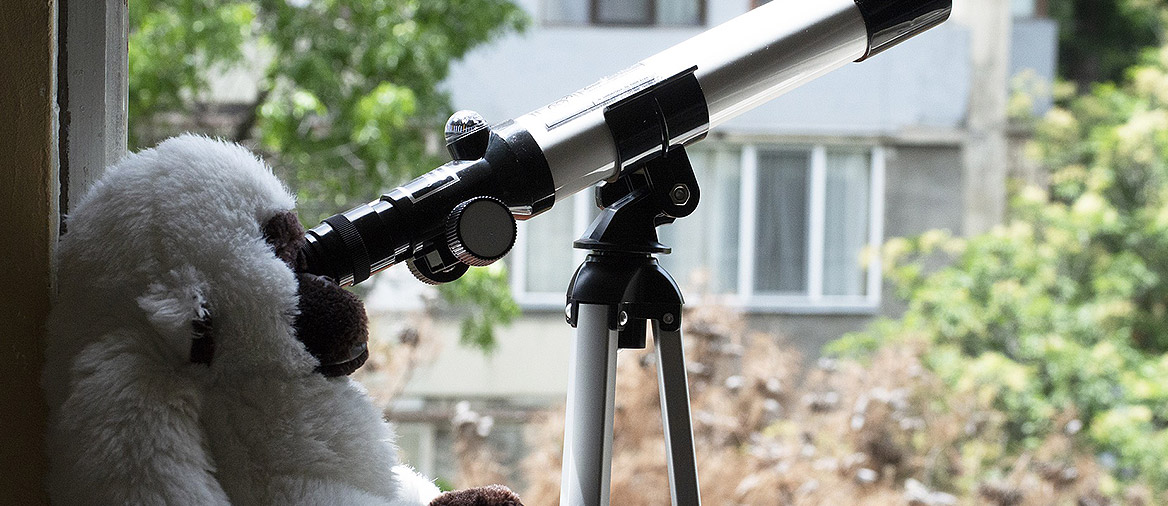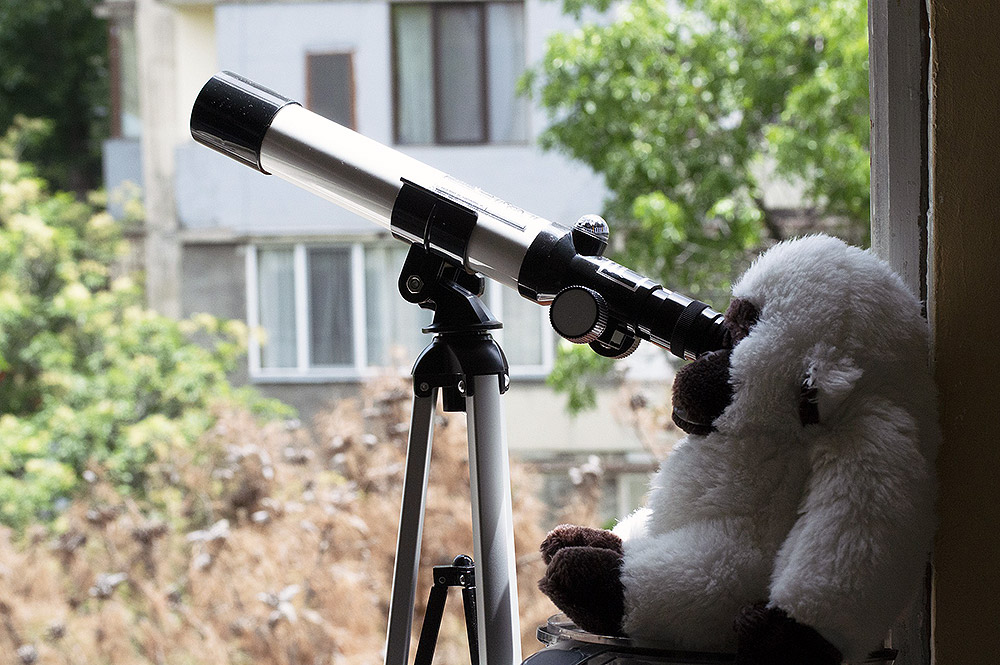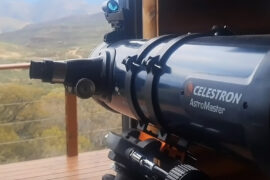Do you want to make an astronomer mad? show them a movie or a tv show where they have placed a telescope right by a window inside the house. As if that was the place the kids in the family use for watching the stars. Those parents definitely do not read this blog.
The truth is using a telescope indoors is a terrible idea. The viewing conditions are bad and the images you will get will look as if you had bought a much cheaper telescope.
If you are a beginner you will not know any better because you won’t have a point of comparison, but your experience will be much worse than if you would just take it outside.
But why?
Well, there are a few reasons for it. Let’s take a look.
Can You Use A Telescope Through A Window?
Not everyone is lucky enough to have a backyard or a rooftop they can use as their observing spot. Or maybe you are simply considering staying inside because it’s the middle of the winter and room temperature is much comfier.
Either way, many people come up with the same question. can you use a telescope through a window?
You can use a telescope through a window and it will work, however, you will get a low-quality image with optical errors. It is not recommended to do so for the following reasons:
- Image distortion – If you try to use a telescope through a closed window, the window will act as another lens and bend the light. Since the glass in mirrors has not polished to transmit light as accurately as the mirrors and lenses in a telescope, it will create optical aberrations, comas, and other imaging issues.
- Loss of light – The average house window will lose around 10% of the light that passes through it. This will result in a loss of brightness, colors, contrast and crispness. Just look closely through the windows in your house. If you pay close attention, you will see bubbles, waves and other optical problems.
- Higher temperatures – Have you seen a movie where there’s a shot of the desert or a very hot climate and there’s some distortion in the image due to to the hot air. Well, that’s a real thing. Telescopes (and optics equipment in general) work best in ambient and cooler temperatures. Hot air can slightly disort the image and when you have an instrument that relies so much on magnification, the problem increases. This is also why photographers don’t like using zoom lenses on hot climates and why it is recommended to let a telescope cool down for a few minutes before using them after bringing them outside.
- Vibration – When you are dealing with extremely high magnification levels, the smallest vibration can result in an unstable image. This is why some people put vibration pads in the legs of their tripod when using a telescope on top of a deck. If you have hardwood floors, you might run into this problem.
As you can see, even if you open the window to eliminate the distortion problem, you will still run into all the other issues, so it’s best to simply try to find a place outside where you can watch the sky.
If you live in an apartment and you don’t have access to a rooftop, there are still options like bringing it to the park. Depending on your city, if that feels unsafe, you can browse Facebook for local astronomy clubs. Some of them get together once a week at public places so it is much safer for everyone. It is also a good opportunity to learn some tips, try equipment that is much more expensive than yours, and socialize with people that share the hobby.
Can you use a telescope on a balcony?
Another alternative for apartment dwellers is to use their balcony or terrace as their observing spot.
It is ok to use a telescope on a balcony, but it will limit the area of the sky you can observe. You will also need to take into account the following:
- Telescope size: If the balcony is too small, a large telescope might become too problematic to set up. A Cassegrain telescope or a small refractor might be your best options in that case.
- Vibration: If the balcony has hardwood floors it might be a good idea to get some vibration pads to reduce the movement.
Due to the distraction that watching through a telescope can represent, it would also not be recommended for small children to use them on a balcony unless you completely trust the balcony’s railing/protection.
I would only recommend a balcony as a viewing spot if there were no other available options. The rooftop of an apartment building is a much better spot as it gives you access to all the visible sky and allows for more freedom of movement.
Summary
- Using a telescop indoors is not recommended, but it’s possible
- Using a telescope through a window makes for a bad viewing experience
- A balcony is a decent alternative for a watching spot if there are no better options.








